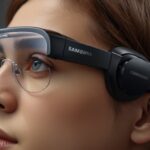Vision Pro will arrive in China later this year, Tim Cook has assured. The news was reported by Reuters, which tells how Apple’s CEO assured the arrival of the headset on Chinese soil by the end of 2024 in response to a question from journalists present at the China Development Forum in Beijing.
Cook also wanted to stave off the possibility of a disengagement from China: Apple, he said, has no intention of relaxing investment in research and development. The reassurance follows a whole series of rumors according to which, especially after Covid, Apple would gradually become convinced that the best solution was to move much of the production from China to India, nearby and with increasingly vigorous economic growth.
The one in China was not a blitz, a lightning visit. At the beginning of last week, Apple’s number one visited a new store opened in Shanghai, then the forum in Beijing where Cook addressed the topic of the debut of Vision Pro in the country. It is the first time that an official source, decidedly illustrious in this case, talks about the timing of arrival of Vision Pro in a specific country, obviously different from the USA.
However, China will not be the only landing country for Vision Pro in 2024. According to recent rumors, the Cupertino headset could soon debut in some countries, among which, unfortunately, there would not be Italy: Australia, Canada, China, France, Germany, United Kingdom, Singapore, Japan and South Korea. The absence of our country is not too surprising, at least as far as Apple is concerned, Italy is hardly part of the first wave of availability.
If nothing else, the arrival in Europe would make it less complicated to get one, importing from Germany or France would be easier on paper than from the United States, although Apple could “complicate” the purchase process for those who intend to use it elsewhere, in a country where it is not for sale. Vision Pro can’t just be ordered online or bought at an Apple Store, you have to make an appointment or proceed with the online face scan so that a headset unit can be adapted to the “specifications”, the conformation, of the customer’s face.












